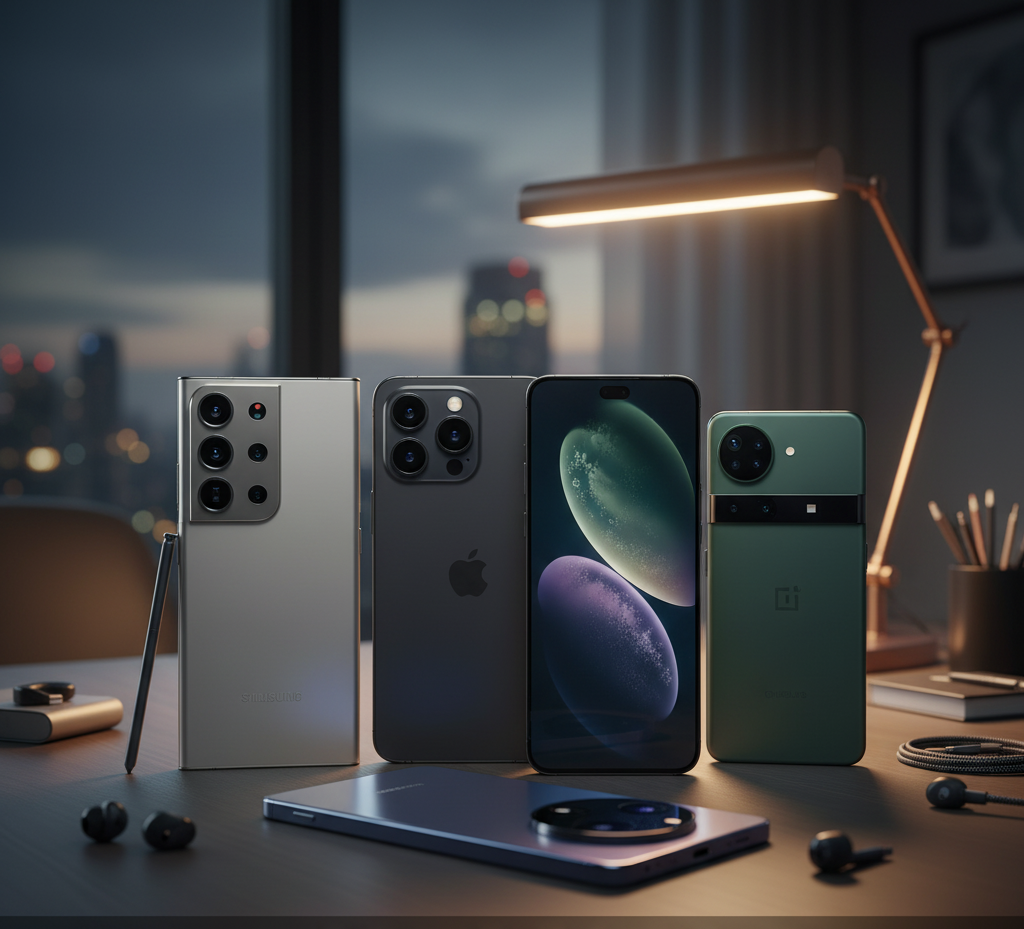Buying a flagship phone in 2025 requires focusing on longevity (7+ years of software support), computational photography over raw megapixels, battery optimization over simple capacity, and ecosystem integration. The major choices are the Samsung Galaxy S25 Ultra (versatility), Google Pixel 9 Pro (camera/AI), and iPhone 16 Pro Max (video/ecosystem), with all offering performance that meets daily needs.
Here’s what truly matters, what’s just hype, and how to choose the right device for actual daily use.
What Really Makes a Flagship Phone Worth Buying?

2025 flagship smartphones: Samsung Galaxy S25 Ultra, iPhone 16 Pro Max, Pixel 9 Pro, and OnePlus 13
Shoppers in 2025 want a premium phone that feels fast, stays relevant for years, and fits seamlessly into everyday life.. Demand is surging for AI features, long battery life, best-in-class cameras, and extended software support.
Performance and Longevity
Think of your phone’s processor as its brain—or maybe the engine in a car. You wouldn’t buy a ride without checking what’s under the hood, right? In 2025, these are the chips that’ll keep your phone zooming along for years
Processors and Benchmarks
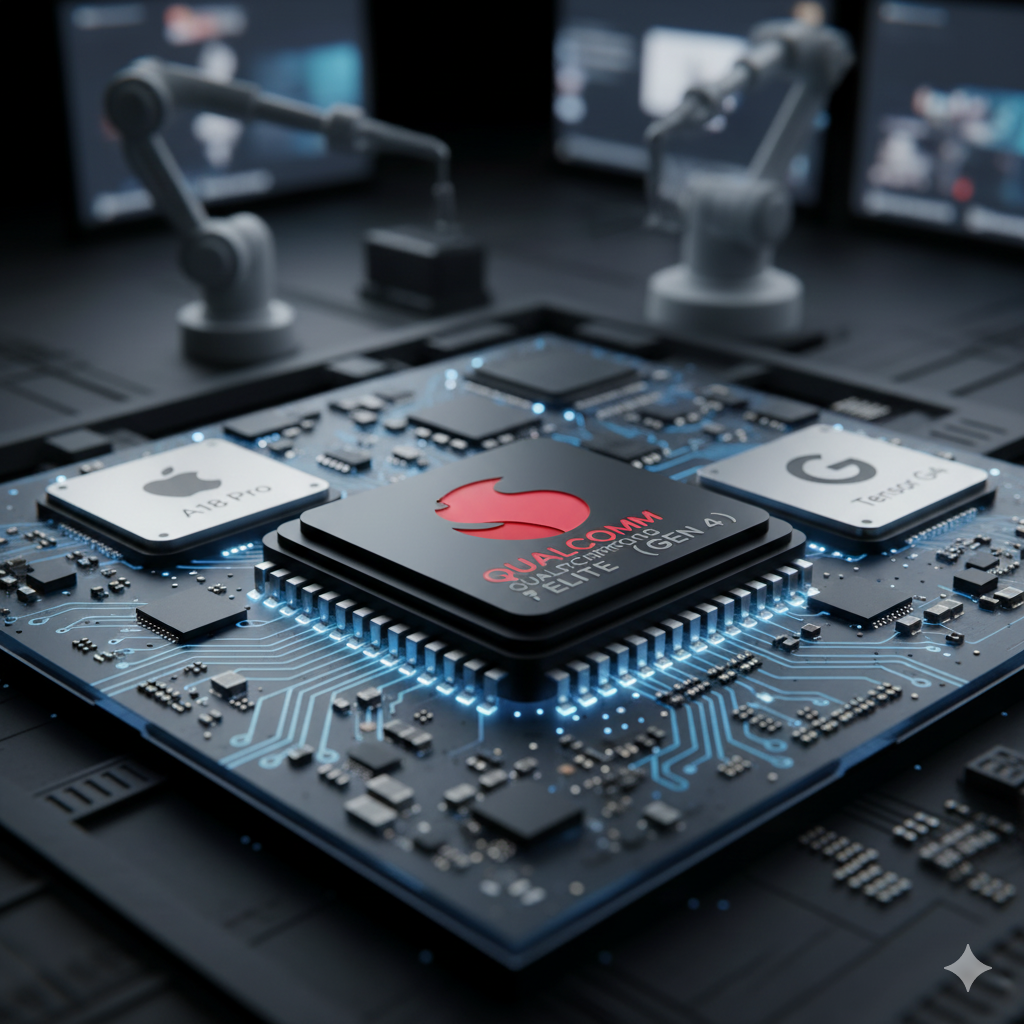
Flagship phone processor chips and logos for Snapdragon 8 Elite, Apple A18 Pro, and Google Tensor G4, showcasing advanced smartphone hardware in 2025”
Which Flagship Phone Processor is the Best for Daily Use?
Modern flagship chips like the Qualcomm Snapdragon 8 Elite (Gen 4) in the Galaxy S25 Ultra and Apple’s A18 Pro are impressive—even more so for their energy efficiency and thermal management. But as expert buyers point out, unless you’re gaming or editing video, top-tier processors are indistinguishable day-to-day.
Is the Latest Flagship Chip Worth It?
- Most buyers notice battery gains: Users report up to 30% longer battery life with the latest Elite chipset.
- Google’s Tensor G4 is tuned for smart photo and AI features, making the Pixel 9 Pro uniquely strong for creative tasks.
Software Support: The New 7-Year Standard
The most critical performance metric is how long your phone will actually last. Both Samsung (Galaxy S25 series) and Google (Pixel 9 series) now guarantee 7 years of OS and security updates. This commitment effectively halves the perceived yearly cost of a $1,200 device compared to older models.
Apple, on the other hand, remains strong, historically providing 5-6 years of seamless iOS updates for devices like the iPhone 16 Pro Max.
| Brand | Updates (Years) |
|---|---|
| Google (Pixel 9) | 7 |
| Samsung (S25) | 7 |
| Apple | 5–6 |
| OnePlus 13 | 4–5 |
If you prioritize a device that lasts until 2032 and delivers premium experiences, the investment is now more justifiable than ever due to unparalleled software support commitments.
.
Display Technology—The 2,500-Nit Visibility Test
Every modern flagship has a beautiful OLED screen. You should focus on two key features for real-world improvement: adaptive refresh rate and outdoor brightness
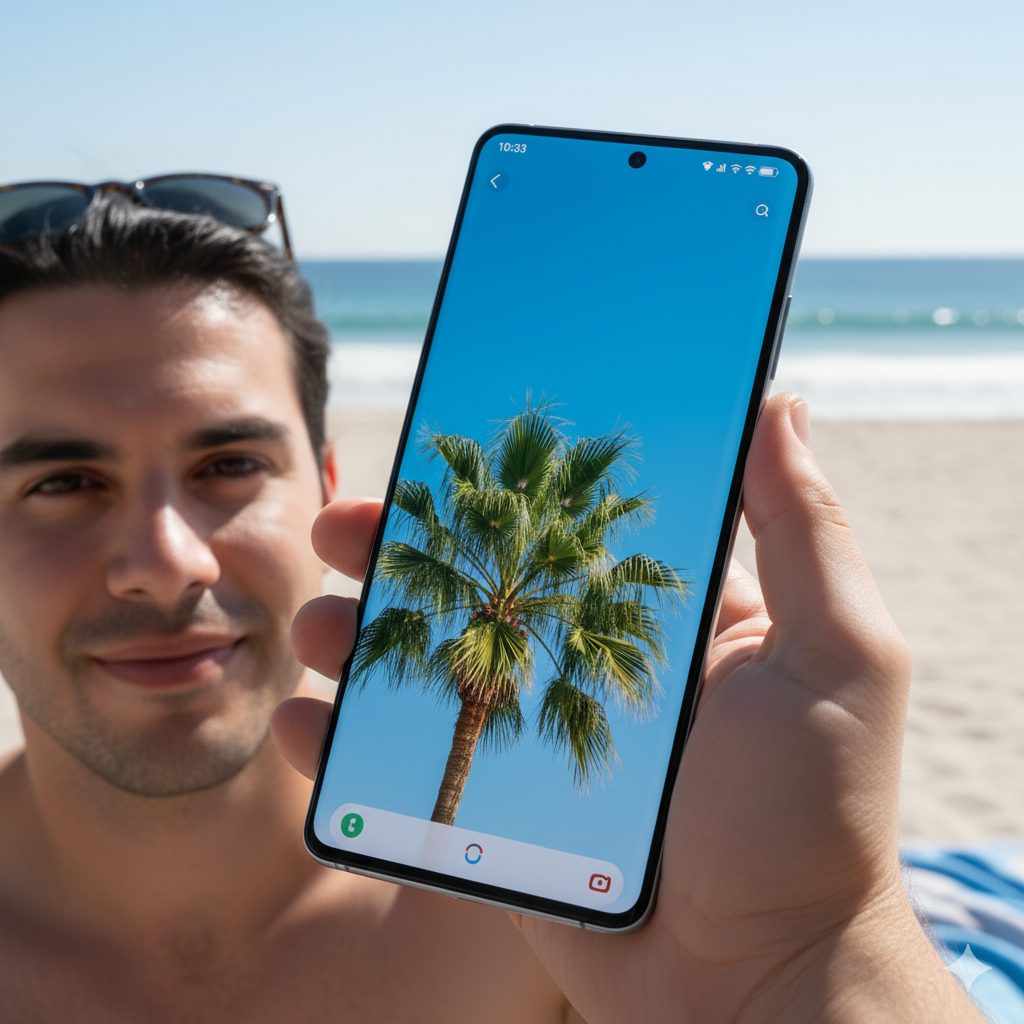
Galaxy S25 Ultra smartphone screen in direct sunlight
What Display Features are Essential in a 2025 Flagship?
Flagship displays now use LTPO OLED or Dynamic AMOLED panels that shift refresh rates between 1Hz and 120Hz. The real game-changer for usability is peak brightness: Anything above 2,000 nits transforms outdoor visibility.
Testing phones in direct sunlight showed 2,500 nits is night-and-day better than older screens.
| Feature | Why It Matters | Concrete Example |
| LTPO OLED | Dynamically adjusts the refresh rate from 1Hz to 120Hz, significantly reducing battery drain when viewing static content. | Found on the iPhone 16 Pro Max and Galaxy S25 Ultra. |
| Peak Brightness | Essential for viewing the screen clearly in direct sunlight. | Flagships are now hitting 2,500 nits or higher, a non-negotiable for anyone who uses their phone outdoors frequently. |
| Durability | Protection like Corning Gorilla Glass Armor 2 (Samsung) or Ceramic Shield (Apple) set the bar for drop protection and scratch resistance. | Pro-Tip: Even the best glass requires a screen protector and case for maximum longevity and to avoid costly accidents. |
Camera Systems—The Computational Photography King
Today’s top camera phones—like Samsung’s 200MP Galaxy S25 Ultra and Google’s Pixel 9 Pro—excel not just through hardware, but sophisticated software.
Do Megapixels Still Matter in Flagship Phone Cameras?
The megapixel war is over. Image processing and optics determine a great photo, not a high megapixel number.
- Computational photography allows shareable results straight out of the phone—no editing required.
- Hybrid setups (wide, ultra-wide, periscope) are now expected on flagships.
Which Flagship Phone Has the Best Camera for General Photography?
The Google Pixel 9 Pro is widely considered the computational photography champion, producing the most “shareable” and consistent photos straight out of the camera. The Samsung Galaxy S25 Ultra offers the most versatility, with a powerful 200MP sensor useful for cropping and a 10x optical zoom periscope lens.
| Use Case | Top Performer Example | Key Differentiating Feature |
| Stills/Low Light | Google Pixel 9 Pro | Unmatched AI-powered processing; consistent results. |
| Video Recording | iPhone 16 Pro Max | Best-in-class video stabilization and color science for creators. |
| Zoom/Flexibility | Samsung Galaxy S25 Ultra & Xiaomi 15 Ultra | 10x optical zoom and up to 100x digital zoom for unparalleled range. |
The Xiaomi 15 Ultra is arguably the finest camera with a phone attached to it.
Video Features Matter
As a creator, I look for 4K/8K recording. It’s advanced stabilization, and robust app ecosystems are top-notch. Apple phones remain top picks for video quality and ecosystem support.
Battery Life and Charging Reality Check
Flagships in 2025 regularly offer 5,000mAh+ batteries, giving 1.5–2 days of heavy use. Software optimization (especially with AI-assisted battery management) matters more than raw size. Charging speed is now a major differentiator
What Battery Specs Should You Demand?
Battery capacity numbers (mAh) alone are misleading. Thanks to super-efficient modern processors (like the Snapdragon 8 Elite and Apple A18 Pro), performance relies more on optimization and charging speed than simple size.
Have a look at the Battery Capacity Sweet Spot
| User Profile | Minimum Capacity Demand (mAh) | Why It Matters |
| Average User (Social Media, calls, light video) | 4,500 mAh | Combined with software optimization (e.g., LTPO displays), this is sufficient for all-day use. |
| Heavy User (Gaming, 4K video, max brightness) | 5,000 mAh+ | Necessary for the peace of mind of a full-day charge under heavy load. The Samsung Galaxy S25 Ultra is a key example here. |
The Reality Check: A 4,500mAh iPhone 16 Pro Max can often outlast a 5,000mAh generic Android phone due to superior system-level efficiency. Look for independent, real-world battery life tests, not just the raw mAh number.
How Fast Should a Flagship Phone Charge in 2025?
Most flagships support 50W+ fast wired charging, capable of hitting 80% charge in about 30 minutes.
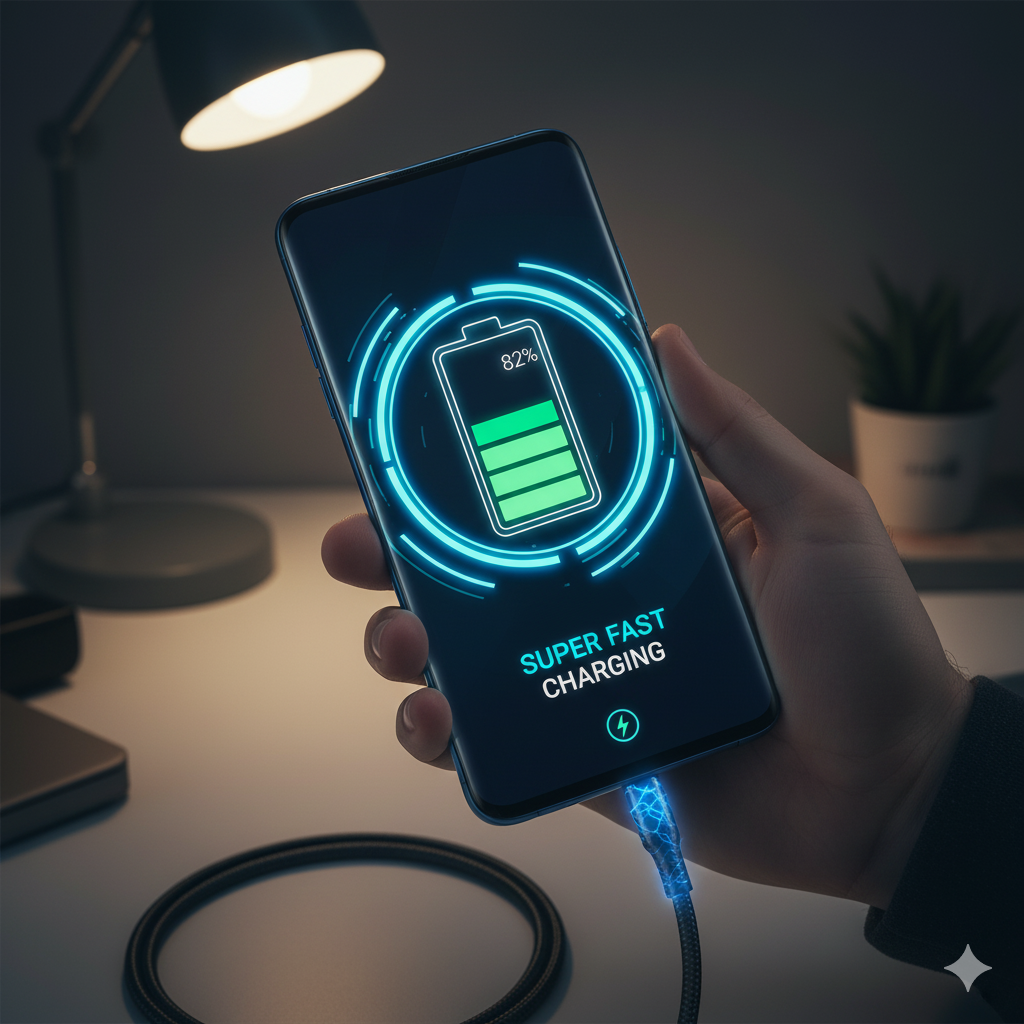
A smartphone charging quickly.
The OnePlus 13, for instance, often leads this category, offering near-instantaneous top-ups. While convenient, remember that charging speeds (especially above 65W) can generate heat, which is the primary enemy of long-term battery health. Many manufacturers now implement protective features to slow charging when the temperature is too high.
Charging speed is a major convenience factor, but look for the supporting technology, not just the wattage.
| Charging Type | 2025 Flagship Standard | Key Real-World Benefit |
| Wired Charging | 45W minimum | Should charge the phone from near-empty to 80% in 30-40 minutes. Brands like OnePlus are pushing 80W to 100W, offering a full charge in under an hour. |
| Wireless Charging | 15W (Qi2) minimum | The adoption of the new Qi2 standard (which uses magnets for perfect alignment) is making 15W reliable and fast enough for overnight top-ups. |
| Reverse Wireless | 5W (Standard) | Necessary for wirelessly charging accessories like your earbuds or smartwatch from your phone’s back. |
Does Fast Charging Ruin Your Battery?
No, not significantly in modern flagships.
The old concern that fast charging accelerates battery degradation is largely debunked by modern technology. Flagship phones now include sophisticated Battery Management Systems (BMS) that minimize heat—the real battery killer.
- Temperature Control: Modern systems automatically throttle (slow down) charging once the phone reaches a certain temperature or hits the ≈80% charge mark.
- User Optimization: Features like “Optimized Charging” on iPhones or “Protect Battery” on Samsung and Pixel phones learn your habits (like overnight charging) and keep the battery at a healthy ≈80% until just before you wake up, further protecting longevity.
| Phone Model | Tested Battery Life |
|---|---|
| ROG Phone 9 Pro | 20.5 hours |
| iPhone 17 Pro Max | 17.9 hours |
| Galaxy M65 Ultra | 2 days, 7,000mAh |
AI Features—Real Utility or Pure Hype?
“AI” is the biggest buzzword of 2025, but only a few features genuinely enhance productivity and convenience.
What Are the Most Practical AI Upgrades?
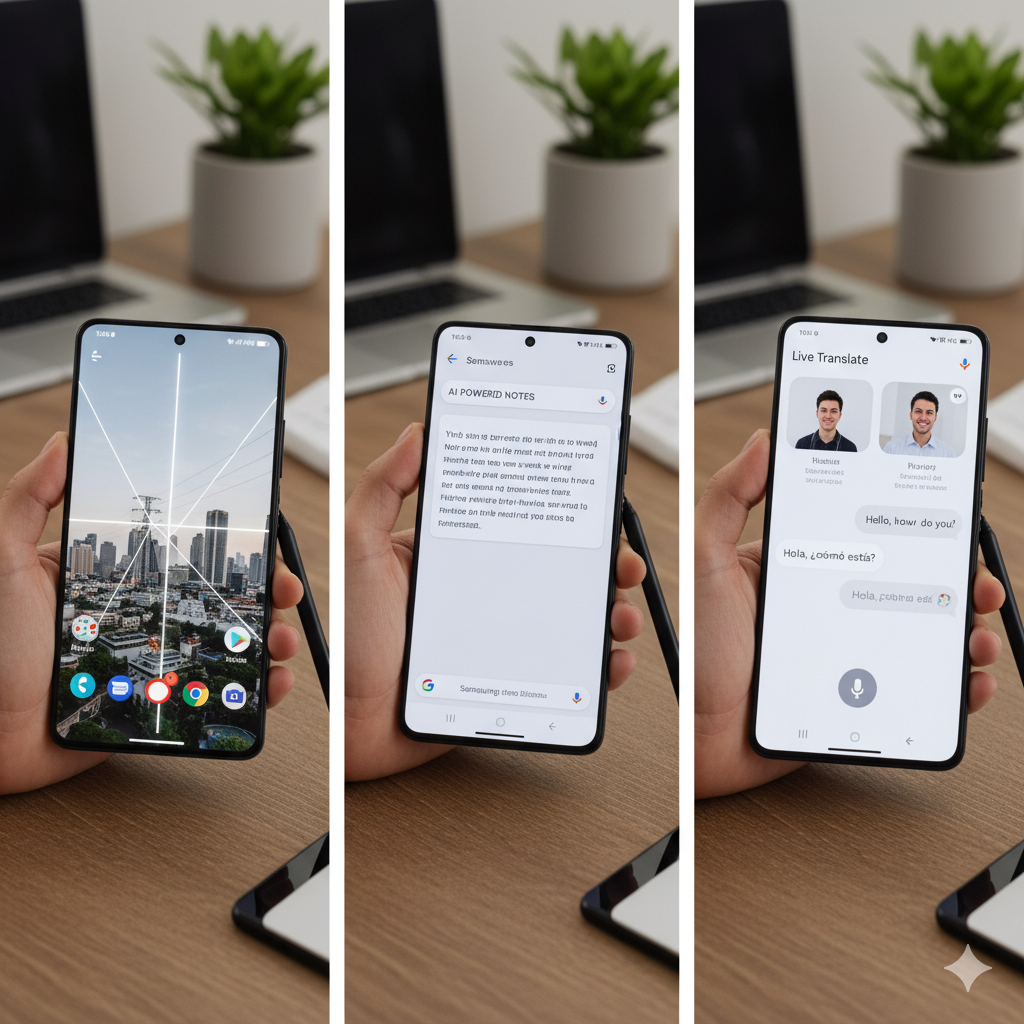
Magic Eraser editing a photo, Live Translate for real-time language, and AI-powered note-taking.
AI is reshaping how buyers use phones:
- Google’s Magic Eraser/Live Translate: The ability to instantly remove unwanted objects from a photo or translate a conversation in real-time makes the Pixel series an unmatched tool for daily life.
- Samsung’s Galaxy AI Suite: This provides advanced, contextual editing and productivity features, especially when utilizing the S Pen for AI-powered note summaries.
- Apple’s Intelligence Integration: Apple is focusing on deep, on-device integration with enhanced Siri functionality, offering more personalized and privacy-centric assistance.
The best implementations use a hybrid approach, processing simple tasks on-device for speed/privacy and leveraging the cloud for complex operations.
A large share of buyers now prioritize devices with advanced AI features and contextual recommendations.
Ecosystem Integration
Apple excels in seamless cross-device features, but Samsung and Google now rival with strong Windows/Android integration.
Does Device Ecosystem Truly Matter? Apple vs. Android Integration
Yes, the device ecosystem matters immensely, often more than any single hardware spec. The choice between Apple, Google (Pixel/Android), or Samsung determines the long-term utility, convenience, and integration of your entire digital life, especially as flagships now promise 7 years of support.
The Real Power of Ecosystems in 2025
The core value of an ecosystem is “Continuity”—the seamless flow of tasks between your devices.
| Ecosystem | Primary Focus & Strength | Real-World Continuity Example |
| Apple (iOS) | Seamless Integration & Privacy. The tightest-controlled, most consistently “just works” experience. | Handoff & Universal Clipboard: Start an email on your iPhone, see a notification pop up instantly on your MacBook, and paste a photo copied on your iPad. |
| Samsung (Galaxy/DeX) | Productivity & Desktop Experience. The best bridge to Windows and desktop-style work. | Samsung DeX: Plug your Galaxy S25 Ultra into a monitor and turn it into a full, windowed, desktop-like environment for serious multitasking or presentations. |
| Google (Pixel/Android) | Cross-Platform AI & Openness. Excellent compatibility with third-party devices and operating systems (Windows, ChromeOS). | Instant Tethering/Fast Pair: Your Pixel phone instantly shares its Wi-Fi password with your Chromebook, and your earbuds automatically pair with either your phone or Windows PC. |
The Two Ecosystem Paths
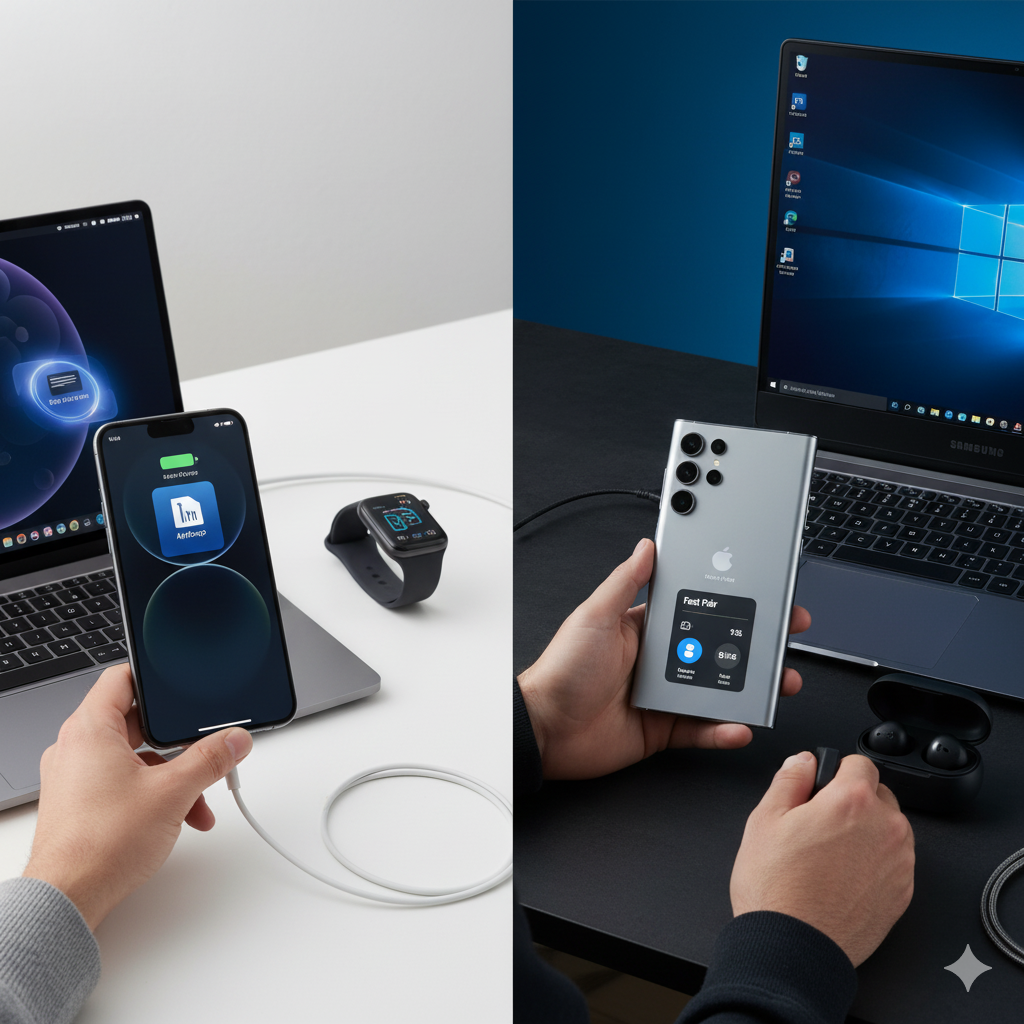
A user connecting iPhone, MacBook, and Apple Watch together and pairing Galaxy S25 Ultra with Galaxy Buds and a Windows laptop.
1. The Apple Walled Garden (iPhone, Mac, Watch)
Why Users Stay: The integration is unparalleled. Features like AirDrop (instant file sharing) and iMessage/FaceTime lock users in, particularly in regions like the US where iMessage is a cultural standard. An iPhone 16 Pro Max and an Apple Watch 11 work in perfect, secure harmony.
Why Users Switch: The system is inherently restrictive. Customization is minimal, and the user is limited to Apple’s vision and hardware (though the shift to USB-C has slightly reduced accessory lock-in).
2. The Android Open Field (Samsung, Google, OnePlus)
Why Users Stay: Choice and Customization. Users can select the exact phone form factor (foldable, stylus, compact), brand, and feature set they want. The latest Android 15 flagships offer more flexibility in widgets, home screen layouts, and default apps.
Why Users Switch: Fragmentation. While Samsung offers 7 years of updates, many budget Android brands still lag. The integration across brands (e.g., getting a Samsung phone to communicate seamlessly with a standard Windows laptop) relies heavily on third-party apps like Google Drive or specialized tools like DeX.
Your Purchase?
You can easily switch ecosystems than it was three years ago. Apps like Google’s Switch to Android simplify data transfer. However, if you already own a MacBook, an Apple Watch, or rely on core Apple services, staying within the ecosystem provides daily convenience that no amount of megapixels or RAM can compensate for.
If you value freedom, hardware diversity, and powerful desktop-style phone productivity (DeX), the Android flagships are the superior choice.
Real-World Reviews—Which Flagship Is Best for You?
Based on extensive hands-on testing and community feedback, here are the top choices for purchasing a flagship phone in 2025:
Top Picks for Every Type of Buyer
Based on extensive hands-on testing and community feedback, here are the top choices for purchasing a flagship phone in 2025:
Best Overall Power User Flagship: Samsung Galaxy S25 Ultra
“The S25 Ultra is the Swiss Army knife of smartphones. The 7-year update guarantee and the versatile 10x zoom camera make it the best long-term Android investment.” – Tech Review Site
Best for Casual Photography & AI: Google Pixel 9 Pro
“If you want the best-looking photo straight out of your pocket without editing, the Pixel 9 Pro is still the king. The real-time AI features are genuinely time-saving.” – Photography Forum User
Best for Video Creators & Ecosystem: iPhone 16 Pro Max
“You simply cannot beat the iPhone’s video quality and app ecosystem for professional content creation. It’s the device of choice for most YouTubers and creators.” – Major Content Creator Quote
Best Value Flagship Hunter: OnePlus 13
“The OnePlus 13 delivers 90% of the flagship experience—including the Snapdragon 8 Elite—at a slightly lower price point. Its super-fast charging is a game-changer.” – Consumer Review
Frequently Asked Questions
What’s the best flagship phone in 2025?
The Apple iPhone 16 Pro Max and Samsung Galaxy S25 Ultra top most lists, praised for display, camera, and software support.
How many years will my flagship phone last?
You should expect 5–7 years of OS/security updates from major brands.
Does AI really improve cameras and battery life?
Yes, buyers and reviews confirm smarter AI means better photos, battery management, and productivity tools.
Should I pick Android or iPhone in 2025?
Consider your ecosystem: iPhones offer seamless Apple integration, but Android flagships excel in customization and Windows compatibility.
Prioritize Your Use Case
Here’s my honest advice after researching this extensively:
Don’t get caught up in spec wars – Real-world experience matters more than benchmark scores
Consider your ecosystem first – This will likely determine your choice more than any single feature
Think about longevity – With 7-year update commitments, your 2025 flagship could last until 2032
Prioritize your main use case – Camera, gaming, productivity, or general use
The smartphone market in 2025 is incredibly mature. You honestly can’t go wrong with any of the flagship options mentioned above.
Whatever you choose, use it to stay connected with people who matter, capture memories that count, and maybe put it down occasionally to experience the world directly.
Experience with a 2025 flagship? What features matter most? Share your story—real user reviews drive the next evolution in smartphones.
